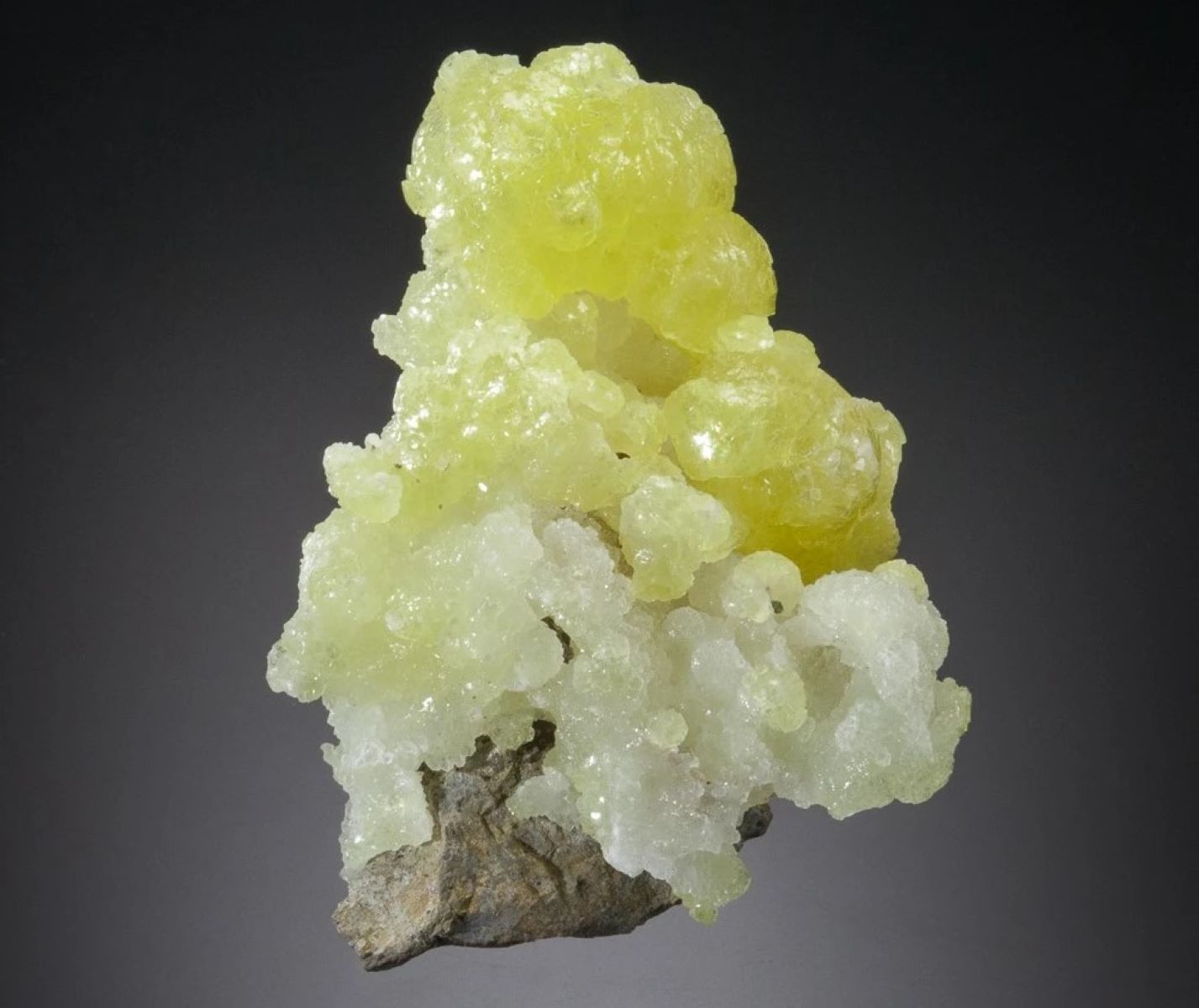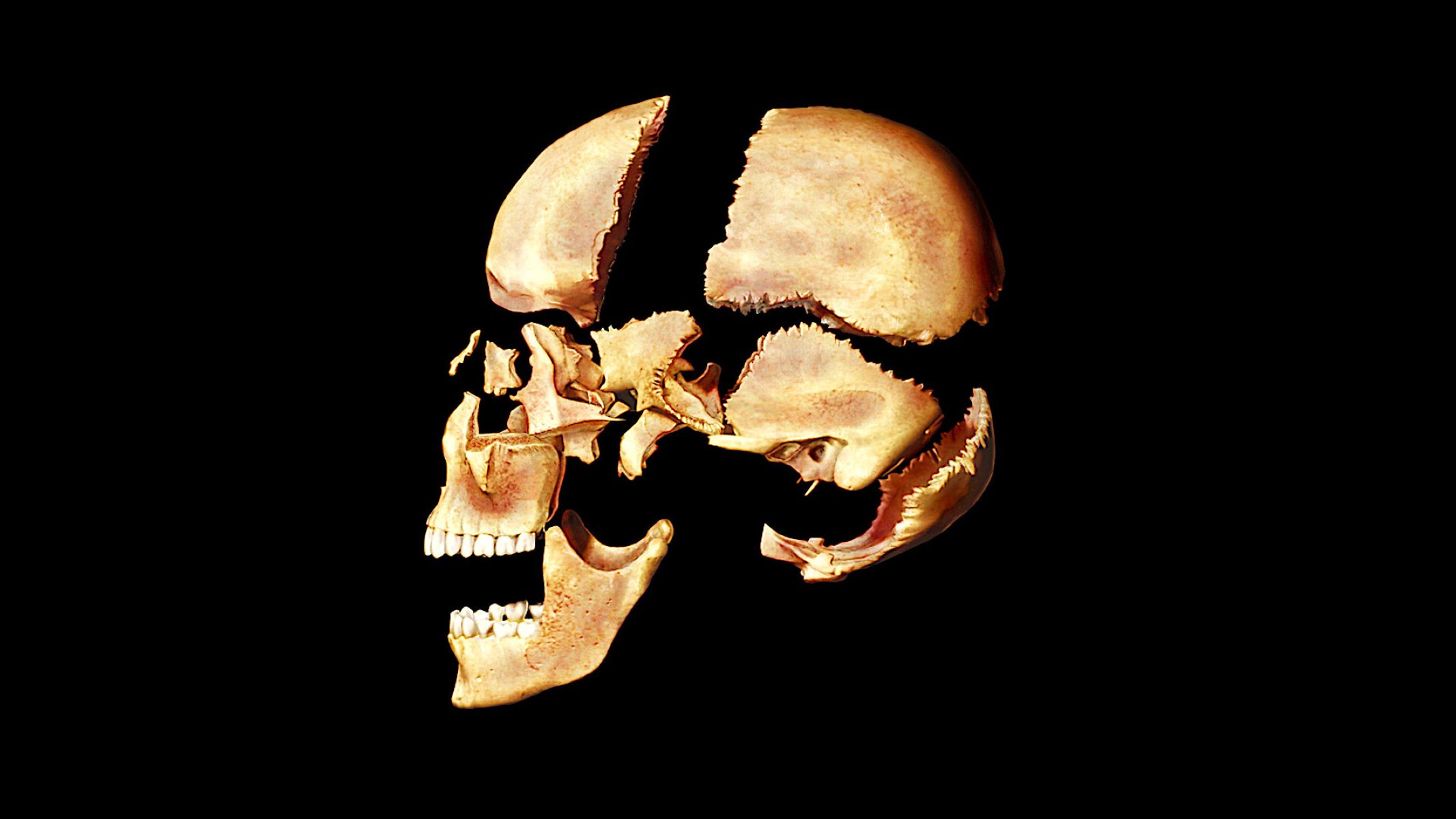
What is Antigorite? Antigorite is a high-temperature serpentine mineral with the chemical formula Mg₃Si₂O₅(OH)₄. It forms under specific conditions of pressure and temperature, typically above 250°C. Found mainly in serpentinite rocks, antigorite often associates with minerals like magnetite, calcite, and chondrodite. Its unique crystal structure and formation process make it a subject of interest in geology. Beyond its geological significance, antigorite has potential biological effects, including cytotoxicity and reactive oxygen species (ROS) production, which can impact human health. Understanding antigorite involves exploring its formation, properties, and implications in both natural and biological contexts.
Key Takeaways:
- Antigorite, a high-temperature serpentine mineral, forms in specific geological settings and exhibits unique physical and chemical properties. Its potential biological effects and environmental impact are areas of ongoing research.
- Antigorite's formation conditions, stability, and potential biological effects make it a fascinating subject for geologists and mineralogists. Ongoing research aims to understand its impact on human health and the environment.
What is Antigorite?
Antigorite is a fascinating mineral with unique properties and formation conditions. Let's dive into some intriguing facts about this high-temperature serpentine mineral.
-
Definition and Classification: Antigorite has the chemical formula Mg₃Si₂O₅(OH)₄. It belongs to the serpentine group of minerals, which form from the alteration of olivine and pyroxene in ultramafic rocks under low-grade metamorphic conditions.
-
Formation Conditions: This mineral forms at high temperatures, typically above 250°C, and is often associated with serpentinite rocks. It can also transform from chrysotile, another serpentine mineral, at around 310°C.
-
Crystal Structure: Antigorite's crystal structure is complex and polysomatic, meaning it can have different periodicities (m-values) depending on formation conditions. Common m-values range from 14 to 18.
-
X-Ray Powder Diffraction (XRPD): Identified using XRPD, antigorite shows characteristic peaks at 7.28 Å, 7.21 Å, 3.623 Å, and 3.589 Å, consistent with its structure and composition.
Geological Occurrences and Associations
Antigorite is commonly found in specific geological settings and often associates with other minerals. Here are some key facts about its geological occurrences.
-
Geological Occurrences: Commonly found in serpentinite rocks formed from the alteration of ultramafic rocks like peridotites. It also occurs with minerals such as magnetite, calcite, and chondrodite.
-
Pressure and Temperature Dependence: Its formation and stability depend heavily on pressure and temperature. Stable at high temperatures and pressures, it can transform into other serpentine minerals under different conditions.
-
Synthetic Antigorite: Produced by mixing brucite and talc in stoichiometric proportions and heating under controlled conditions. This method helps study its properties and behavior under various conditions.
-
Natural Occurrences: Found in serpentinite rocks from places like Tinos Island in Greece and other global locations. Often forms with minerals like olivine and diopside.
-
Mineral Associations: Commonly associated with minerals such as magnetite, calcite, pyroaurite, and chondrodite, providing insights into the geological environment of formation.
Physical and Chemical Properties
Antigorite exhibits unique physical and chemical properties that make it a subject of interest for geologists and mineralogists.
-
Deformation Textures: Exhibits deformation textures, especially when associated with olivine and diopside, indicating shearing and deformation before incorporation into the host rock.
-
Aluminum Content: Contains varying amounts of aluminum, up to 2.8 wt% in core regions, decreasing towards the rims. This variation is significant for understanding its formation and stability.
-
Chlorite Association: Often found with chlorite, another mineral formed during serpentinization. Chlorite presence can influence aluminum content and stability.
-
Temperature Dependence: Aluminum content shows temperature dependence, with higher aluminum indicating lower formation temperatures. This relationship helps understand the thermal history of the rocks.
-
Aluminum Isopleths: Graphical representations of how aluminum content varies with temperature, aiding in understanding the thermal evolution of rocks and antigorite stability.
-
Tschermak Exchange: Involves the substitution of aluminum for magnesium in its structure. This exchange is temperature-dependent and influenced by aluminum-rich phases like chlorite.
-
Core-to-Rim Zoning: Often exhibits core-to-rim zoning, with higher aluminum and chromium in core regions compared to rims. This pattern indicates formation history and conditions.
Metamorphic and Equilibrium Conditions
Understanding the metamorphic and equilibrium conditions under which antigorite forms provides insights into its stability and behavior.
-
Retrograde Serpentine Formation: Forms late-stage serpentine veins or halos during retrograde metamorphism of serpentinites. These formations, though less significant volumetrically, offer valuable information about its behavior under different conditions.
-
Metamorphic Conditions: Forms under low-grade metamorphic conditions, typically below 600°C. Stable in the presence of olivine and diopside, common minerals in serpentinite rocks.
-
Equilibrium Conditions: Stability influenced by equilibrium conditions. The mineral assemblage in serpentinite rocks, including antigorite, olivine, and diopside, indicates formation under stable conditions.
-
Partitioning of Elements: Partitioning of elements like iron, magnesium, and nickel between olivine and antigorite is similar to that in Alpine peridotites, suggesting stability in source rocks.
-
Fe-Rich Composition: Some serpentinite rocks have Fe-rich antigorite, possibly due to iron partitioning into residual olivine. This composition is more common in antigorite-rich samples.
-
Diopside Grains: Diopside grains in antigorite-rich rocks are typically clear and lack exsolution lamellae, indicating they are part of the low-temperature assemblage without significant thermal alteration.
Biological Effects and Environmental Impact
Antigorite's potential biological effects and environmental impact are areas of ongoing research. Here are some key facts.
-
Aluminum Coordination: Aluminum in diopside grains is six-fold, consistent with stability in the presence of antigorite. Relict clinopyroxene grains often show visible lamellae or turbidity, indicating four-fold aluminum coordination.
-
Sulfide Inclusions: Sulfide inclusions like heazlewoodite are characteristic of serpentinized peridotites, providing evidence of the serpentinization process and antigorite formation under specific conditions.
-
Chlorite Presence: Chlorite in some serpentinite samples contains higher aluminum and chromium than antigorite, influencing its aluminum content and stability.
-
Aluminum Variations: Aluminum content varies from core to rim, with higher values in core regions and lower towards rims, significant for understanding formation history and stability.
-
Chlorite-Antigorite Equilibrium: Equilibrium between chlorite and antigorite is crucial for understanding serpentinization. Chlorite presence influences aluminum content and stability, indicating a complex interplay between these minerals.
-
Metamorphic Evolution: Metamorphic evolution of serpentinite rocks is closely linked to antigorite formation and stability. Presence of antigorite, olivine, and diopside provides insights into thermal and pressure conditions of rock formation.
-
Biological Effects: Studied for potential biological effects, particularly cytotoxicity. Fibrous antigorite induces a dose-dependent decrease in cell viability and increases reactive oxygen species (ROS) production in cell lines, suggesting potential harm to humans.
-
Cellular Toxicity: Investigated using cell lines like MeT-5A and J774, showing antigorite can interfere with cell proliferation and induce cell death, indicated by increased lactate dehydrogenase (LDH) release.
-
ROS Production: Found to elevate ROS production in cells, a hallmark of cell injury and death. This increase is believed to occur through free-radical-mediated reactions or hydrogen bonding between silica particles and cell membranes.
-
Cytotoxicity Mechanisms: Involves interaction with cell membranes, leading to ROS production and subsequent cell death. This interaction is critical for understanding biological effects and potential harm to humans.
-
Biological Implications: Significant biological implications, particularly in lung diseases. Ability to induce cell death and increase ROS production suggests potential harm if inhaled or ingested.
-
Environmental Impact: Environmental impact is multifaceted, given its formation in serpentinite rocks and potential biological effects. Presence in natural environments can influence local ecosystems, especially in areas with common serpentinite rocks.
-
Future Research Directions: Future research includes further studies on biological effects, particularly human health. Investigating environmental impact and role in geological processes will provide valuable insights into complex interactions between minerals and surroundings.
The Fascinating World of Antigorite
Antigorite, a high-temperature serpentine mineral, boasts a unique crystal structure and forms under specific conditions. Found in serpentinite rocks, it often associates with minerals like magnetite and calcite. Its formation depends on pressure and temperature, making it a key player in understanding geological processes. Synthetic antigorite helps scientists study its properties and behavior.
Aluminum content in antigorite varies with temperature, providing insights into its formation history. The mineral's biological effects, including cytotoxicity and ROS production, raise concerns about its potential harm to humans.
Antigorite's presence in natural environments impacts local ecosystems, especially in areas rich in serpentinite rocks. Future research will delve deeper into its biological effects and environmental impact, shedding light on this intriguing mineral's role in both geology and biology.
Frequently Asked Questions
Was this page helpful?
Our commitment to delivering trustworthy and engaging content is at the heart of what we do. Each fact on our site is contributed by real users like you, bringing a wealth of diverse insights and information. To ensure the highest standards of accuracy and reliability, our dedicated editors meticulously review each submission. This process guarantees that the facts we share are not only fascinating but also credible. Trust in our commitment to quality and authenticity as you explore and learn with us.


